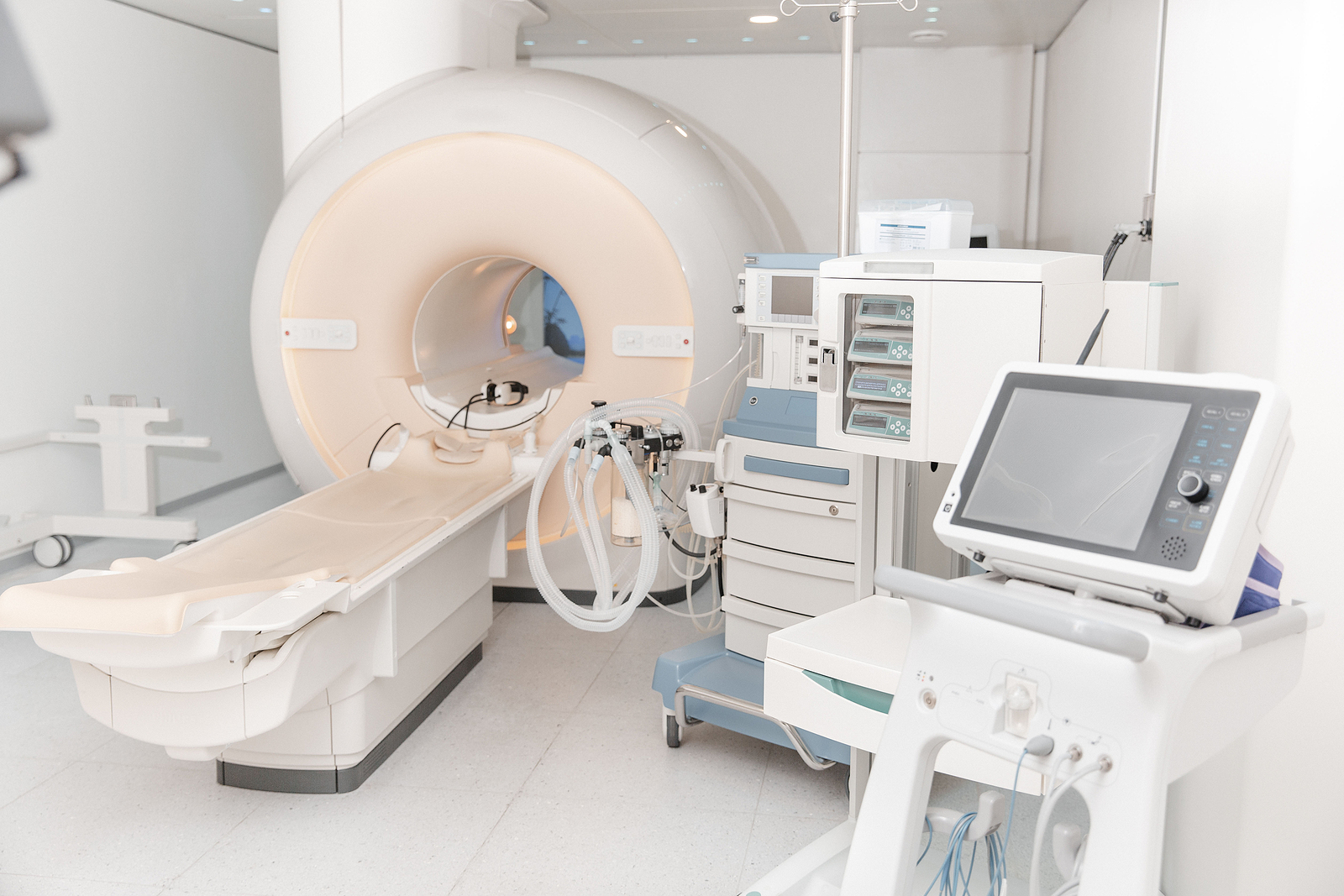- News ›
- Research Supports Radiotherapy For Vestibular Schwannomas
Research Supports Radiotherapy For Vestibular Schwannomas

Not every kind of tumour is cancerous, but many other growths can cause a lot of problems for patients when they expand to sufficient dimensions to begin pressing against important nerves or organs. This may cause discomfort in some cases, but more significant symptoms may arise when pressure impedes the normal functioning of organs.
A vestibular schwannoma is a case in point. Also known as an acoustic neuroma, it is usually a benign tumour that emerges from the Schwann cells (which is where the name comes from) inside the inner ear. Malignant (cancerous) vestibular schwannomas are rare.
Like other benign tumours, its rate of growth is slow, but eventually it can grow large enough to start putting pressure on the organs of the ear, especially the vestibular nerve. This nerve carries signals between the apparatus of hearing and balance in the ear and the brain, functions that can be badly disrupted by the tumour as it places pressure on the nerve.
It is usually the emergence of such symptoms that indicates the likely presence of a vestibular schwannoma, with diagnostic confirmation being provided by an MRI scan, which can also show how large the tumour is. Tumour size can determine the best course of action and also whether some treatment options are not feasible.
We specialise in using radiotherapy to treat vestibular schwannoma cases and have plenty of experience in doing so. This has provided ample evidence that this treatment can be effective.
Research over the past decade has also provided plenty of proof that using radiotherapy can be very effective in controlling vestibular schwannomas. This is an important point because this is not the only potential response to the emergence of such a tumour; monitoring and invasive surgery are alternative options.
Queen Square also provides Gamma Knife stereotactic radiosurgery for cancer treatment as appropriate.
Firstly, it found that in the case of smaller lesions, the ‘control rates’ (meaning the extent to which the tumour was kept at a manageable size) were better than 90 per cent when radiotherapy was used.
In addition, it also found that radiotherapy was very effective in shrinking large tumours that had become inoperable. This situation can arise when tumours are detected late and have already grown to a very substantial size.
A significant point made in the assessment was that the very first use of stereotactic radiosurgery to treat vestibular Schwannomas, carried out in 1969 by Swedish neuroscientist Lars Leksell using the Gamma Knife he had invented, produced some very positive results even though that technology was very new.
This included local control rates of 80 per cent 3.7 years after the operation, with only 14 per cent facial nerve impairment, the latter being a significant risk factor in surgery, as nerves under pressure from the tumour can occasionally be damaged in surgery.
These were impressive results in view of the fact that the techniques and technology were so new, and outcomes have improved since then.
In the rare case of a malignant tumour, it will require intervention aimed primarily at curbing the cancer. Otherwise, it is about finding the best means of reducing or eliminating symptoms such as hearing loss, tinnitus and vertigo in a way that minimises risks such as the permanent loss of facial or damage to facial nerves.
This is not to say that radiotherapy is the only or best option for everyone; each patient is different. However, if you are unhappy with the treatment you have had so far and its results, we may be able to offer a new approach that could prove to be more effective.
Learn more about our advanced radiotherapy treatments for vestibular schwannomas on the Queen Square website.
A vestibular schwannoma is a case in point. Also known as an acoustic neuroma, it is usually a benign tumour that emerges from the Schwann cells (which is where the name comes from) inside the inner ear. Malignant (cancerous) vestibular schwannomas are rare.
Like other benign tumours, its rate of growth is slow, but eventually it can grow large enough to start putting pressure on the organs of the ear, especially the vestibular nerve. This nerve carries signals between the apparatus of hearing and balance in the ear and the brain, functions that can be badly disrupted by the tumour as it places pressure on the nerve.
Symptoms Arising From A Vestibular Schwannoma
The consequences of this can be impaired hearing and also vertigo, which leaves the patient struggling with their balance and suffering from spells of dizziness and nausea. Tinnitus, which can involve buzzing, whooshing or echoing sounds in the ear, is another common symptom.It is usually the emergence of such symptoms that indicates the likely presence of a vestibular schwannoma, with diagnostic confirmation being provided by an MRI scan, which can also show how large the tumour is. Tumour size can determine the best course of action and also whether some treatment options are not feasible.
Radiotherapy For Vestibular Schwannoma
If you or someone close to you has such symptoms and is seeking a solution to them, one of the most effective forms of vestibular schwannoma treatment is radiotherapy, which uses precise beams of radiation to shrink the tumour by damaging its DNA. This shrinkage reduces the pressure the schwannoma can place on the vestibular nerve.We specialise in using radiotherapy to treat vestibular schwannoma cases and have plenty of experience in doing so. This has provided ample evidence that this treatment can be effective.
Research over the past decade has also provided plenty of proof that using radiotherapy can be very effective in controlling vestibular schwannomas. This is an important point because this is not the only potential response to the emergence of such a tumour; monitoring and invasive surgery are alternative options.
Queen Square also provides Gamma Knife stereotactic radiosurgery for cancer treatment as appropriate.
The Weight Of Evidence
An assessment of research carried out by PubMed and Scopus and published in 2016 highlighted a clear pattern through research into the effectiveness of radiotherapy for vestibular schwannomas. This research covered 324 papers from various countries across the globe, including the US, UK, Norway, Japan, South Africa, Italy, France and Taiwan.Firstly, it found that in the case of smaller lesions, the ‘control rates’ (meaning the extent to which the tumour was kept at a manageable size) were better than 90 per cent when radiotherapy was used.
In addition, it also found that radiotherapy was very effective in shrinking large tumours that had become inoperable. This situation can arise when tumours are detected late and have already grown to a very substantial size.
A significant point made in the assessment was that the very first use of stereotactic radiosurgery to treat vestibular Schwannomas, carried out in 1969 by Swedish neuroscientist Lars Leksell using the Gamma Knife he had invented, produced some very positive results even though that technology was very new.
This included local control rates of 80 per cent 3.7 years after the operation, with only 14 per cent facial nerve impairment, the latter being a significant risk factor in surgery, as nerves under pressure from the tumour can occasionally be damaged in surgery.
These were impressive results in view of the fact that the techniques and technology were so new, and outcomes have improved since then.
Your Treatment Options
If you are suffering from a vestibular schwannoma, your treatment options may depend on the exact location of the tumour, but more importantly, the size and the question of whether it is malignant or benign.In the rare case of a malignant tumour, it will require intervention aimed primarily at curbing the cancer. Otherwise, it is about finding the best means of reducing or eliminating symptoms such as hearing loss, tinnitus and vertigo in a way that minimises risks such as the permanent loss of facial or damage to facial nerves.
This is not to say that radiotherapy is the only or best option for everyone; each patient is different. However, if you are unhappy with the treatment you have had so far and its results, we may be able to offer a new approach that could prove to be more effective.
Learn more about our advanced radiotherapy treatments for vestibular schwannomas on the Queen Square website.

